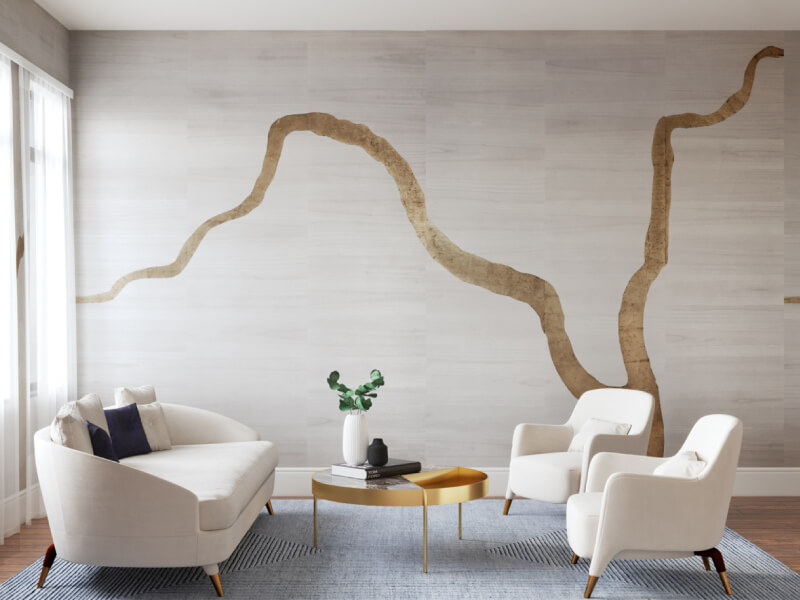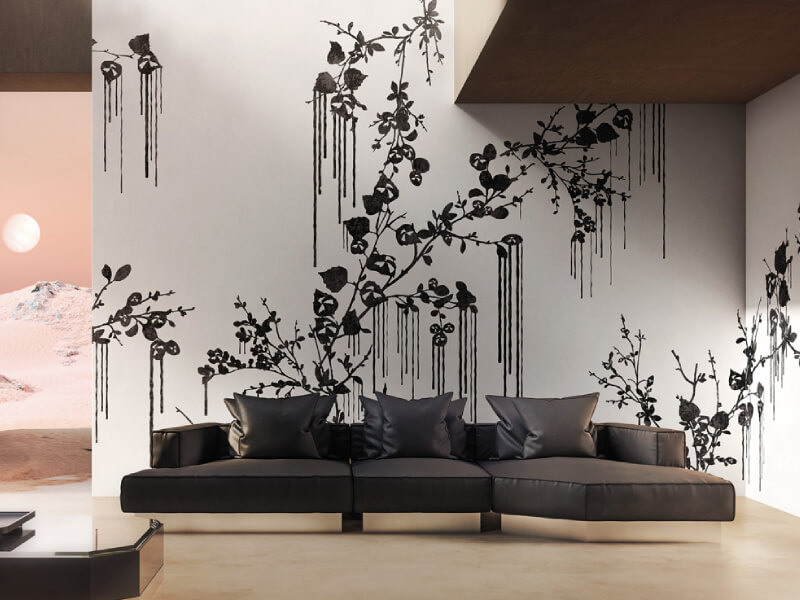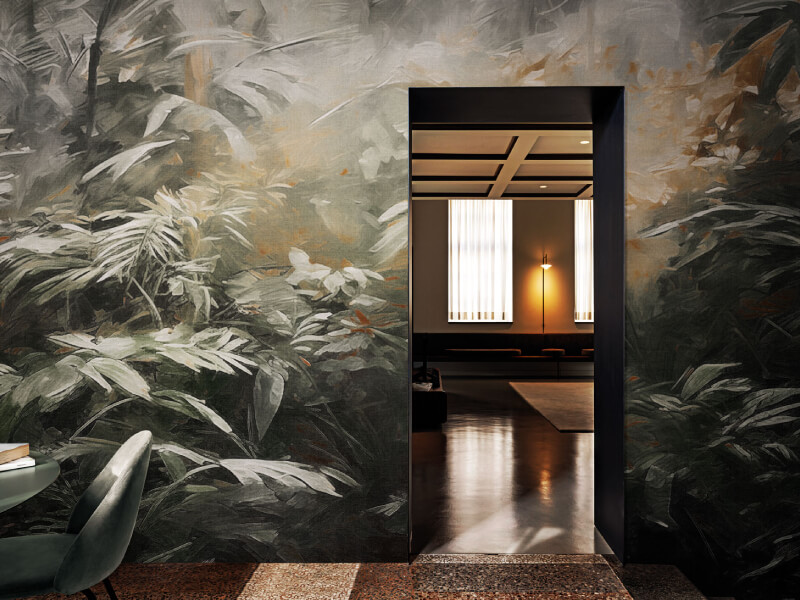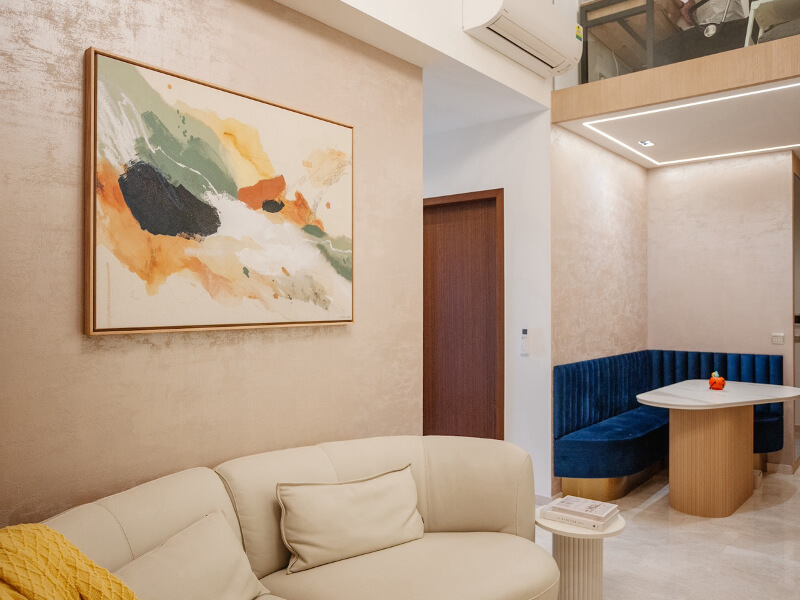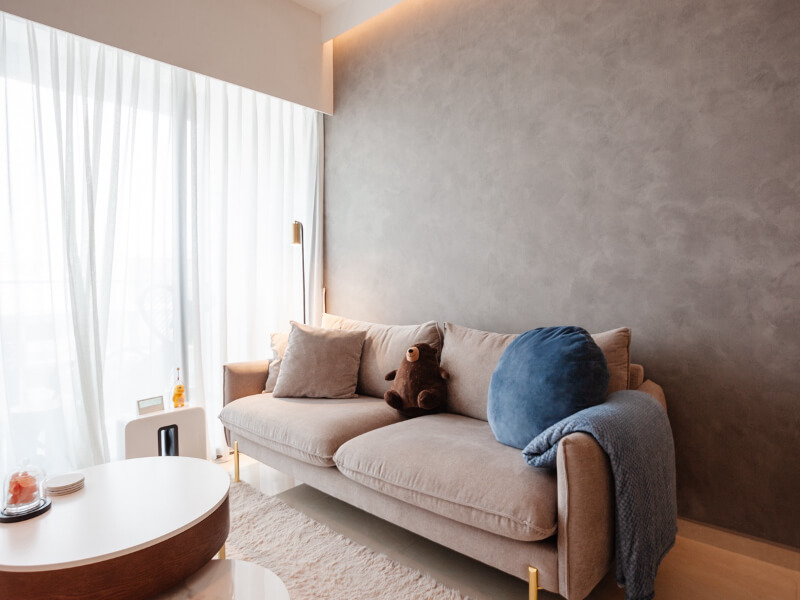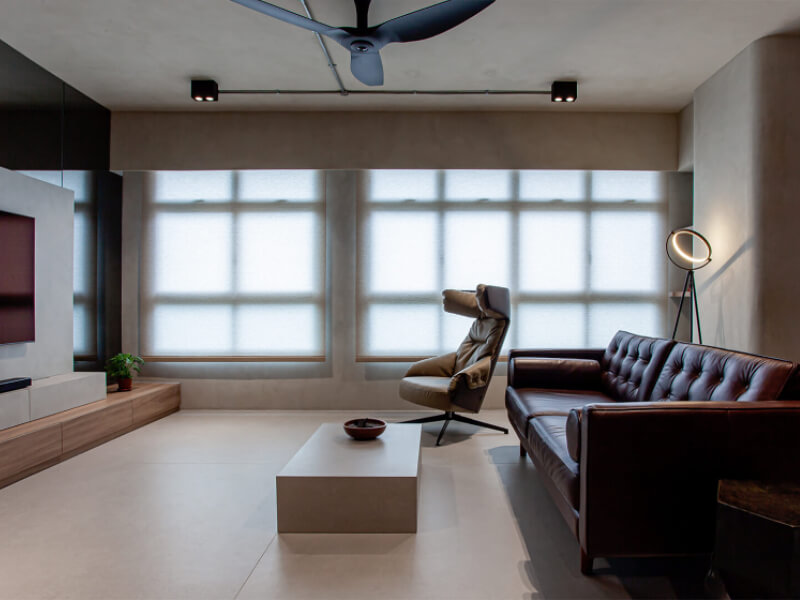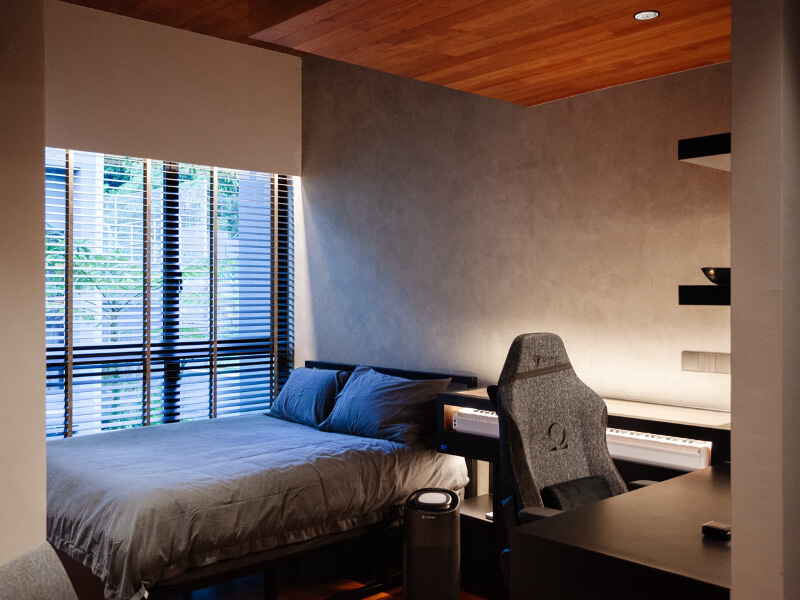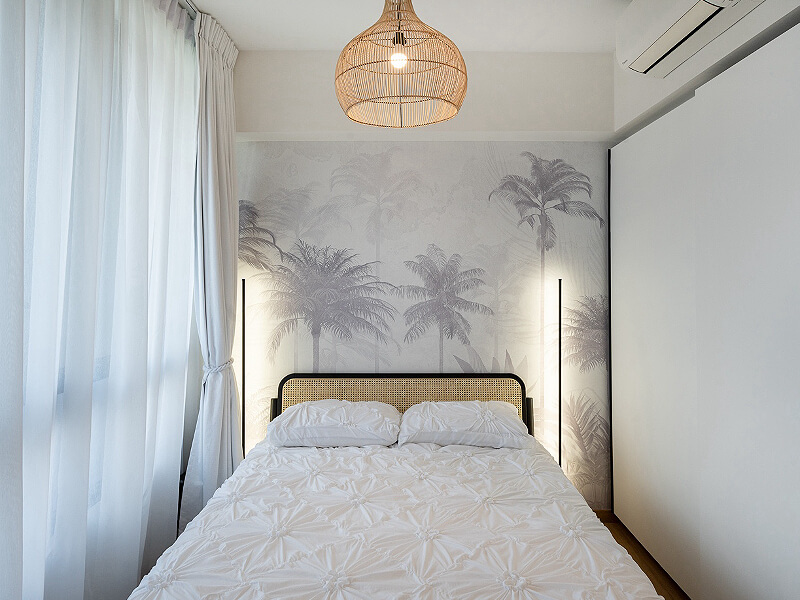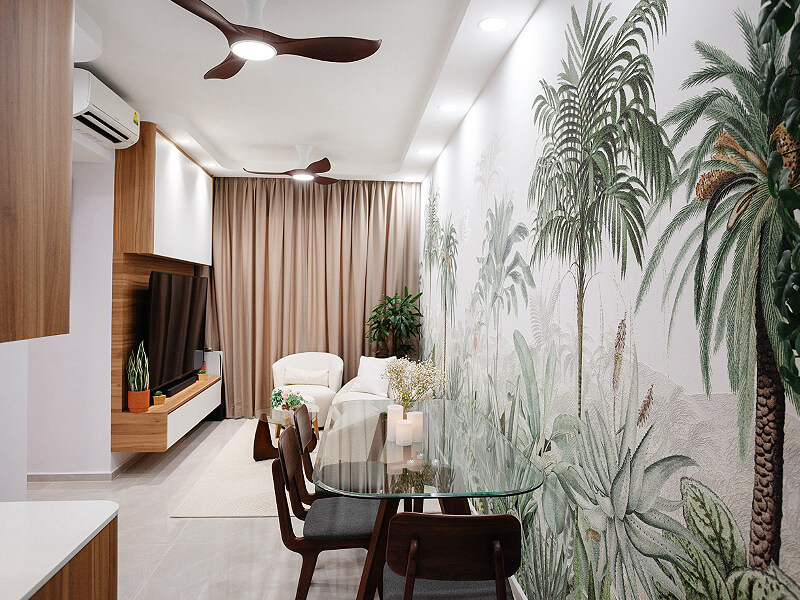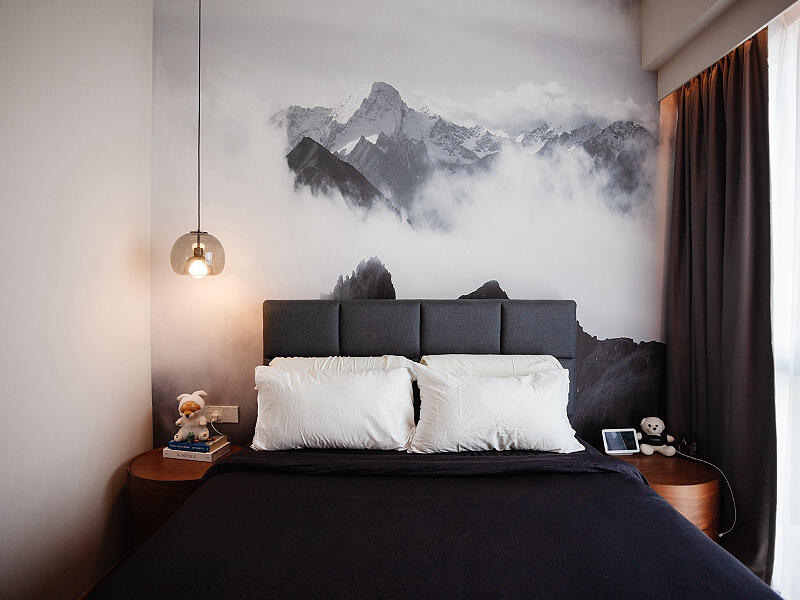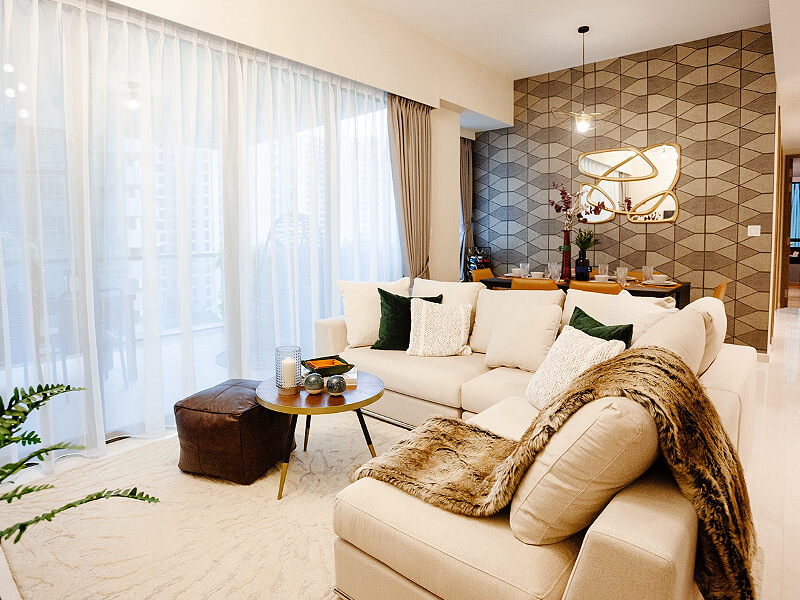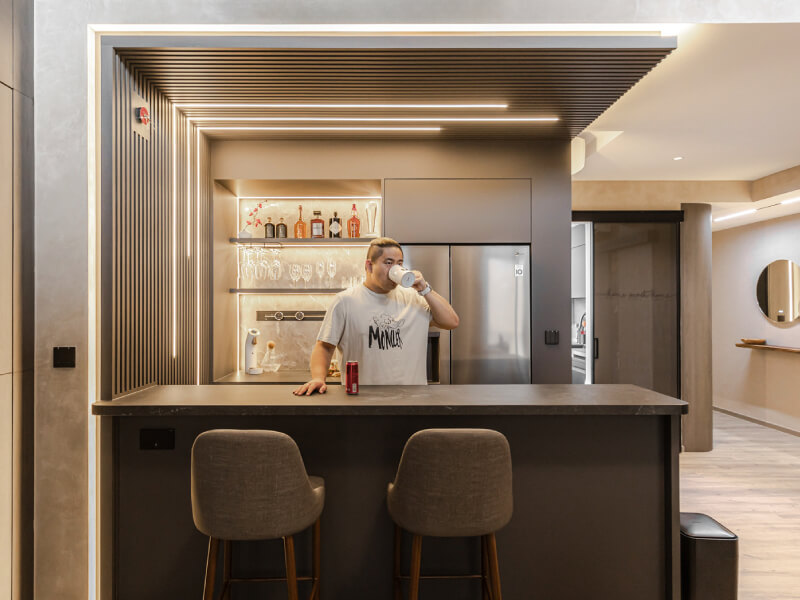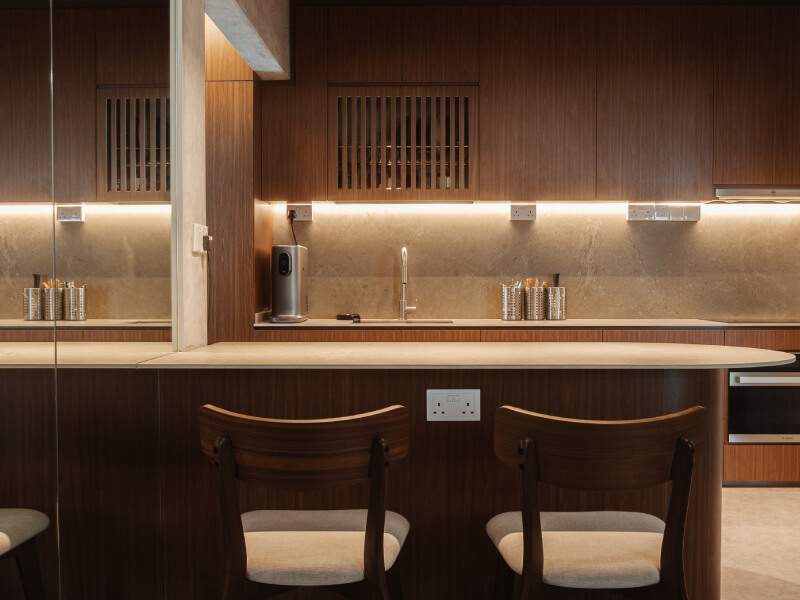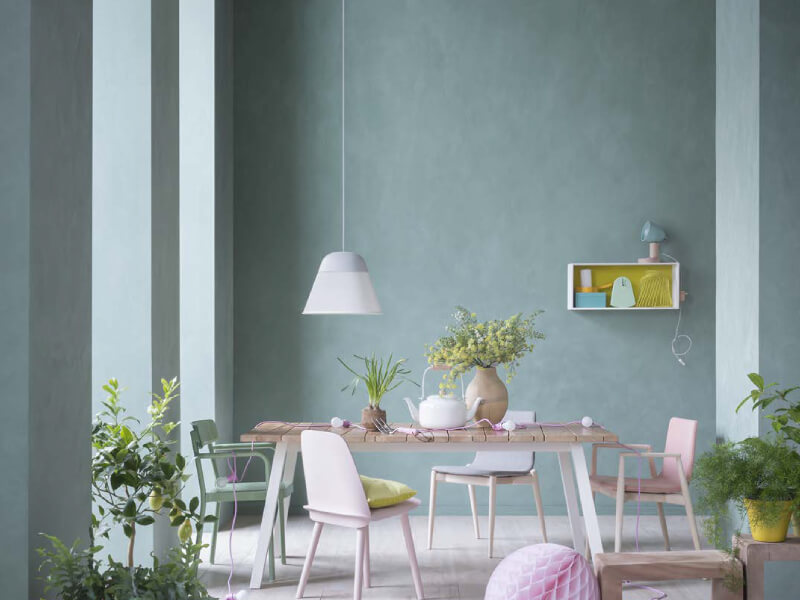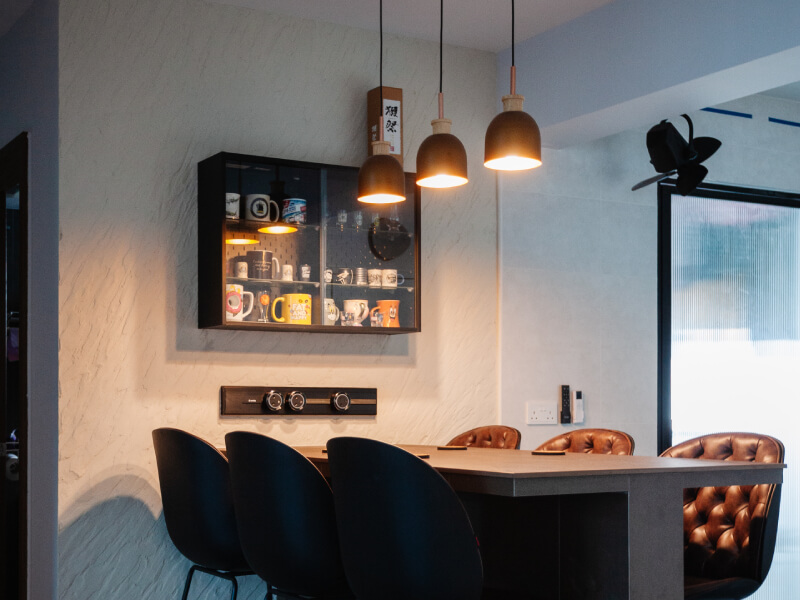When installing new wallpaper, you likely envision stunning walls once the process is complete. However, despite careful preparation, issues can arise due to factors beyond your control, such as room temperature and climate. If your room is too hot or cold during installation, problems may surface immediately or in the near future.
For this reason, it’s essential to maintain optimal humidity and temperature levels in the room where the wallpaper will be installed. Beyond these conditions, understanding your local climate and its effect on the longevity of your wallpaper is equally important.
Read on as we explore how climate and temperature impact wallpaper installation and what you can do to prevent issues.
Does Climate Affect Wallpaper Installation?
The short answer to this question is yes. Both the climate and room temperature can affect wallpaper installation. Temperature extremes can impact the drying process of the wallpaper adhesive. Hot temperatures can shorten it, while cold temperatures can prolong it. In either case, you may find it hard to make sure that your wallpaper ends up in the proper position. Similarly, climate can also have a direct effect on the behaviour of the wallpaper. Cold weather can make the wallpaper stiff and hard to handle, whereas excessively hot weather can cause the expansion of the wallpaper during installation, which can then lead to awful-looking gaps on the surface.
However, in many cases, climate-related damage is not evident at first; it only becomes obvious when the wallpaper starts to bubble or curl due to inadequate adhesion. Another more serious problem that may arise due to a climate-related wallpaper installation issue is the possible growth of mould. The presence of mould on or behind wallpaper can trigger a variety of respiratory problems and other health concerns. Some of the most common kinds of harmful fungi found thriving on or behind wallpaper are penicillium expansum and penicillium chrysogenum. These types of fungi are especially common in humid climates, which create a welcoming environment for these organisms.
Wallpaper Installation Tips for a Tropical Climate
The different kinds of climate-related issues that may arise during and after wallpaper installation can be avoided with adequate precaution and smart preparation. Indeed, by taking the necessary precautionary measures, it is possible to significantly minimise – if not eliminate – the chances of encountering wallpaper installation problems.
Here are some simple but essential tips on how you can prevent the common wallpaper installation problems that may arise, specifically in tropical climates like Singapore.
1. Choose the right wallpaper materials
To stop mould from wreaking havoc on your walls, you should consider looking for micro-vented or breathable wallpaper in Singapore. These types of wallpaper are inspired by a basic principle: mould requires moisture in order to survive and thrive. As such, if your wallpaper has a porous texture, it will allow air to circulate through and hinder damp spots from accumulating behind the material, which is one of the most common causes of mould growth in the house. However, keep in mind that both the bathroom and the kitchen are exceptions to this principle. Because of the large concentration of hot and moist air in these areas, it is more advisable to select non-breathable walls for them, such as vinyl.
2. Have the room ready for wallpaper
Before you start the wallpaper installation process, be sure to check first if the climate conditions are accurate. This means that you must be looking to be somewhere in between the following ranges:
- Humidity: 30% to 50% relative humidity
- Temperature: 15°C to 27°C
Aside from the climate conditions, you also need to determine the moisture level of the walls you will be covering with wallpaper. For this purpose, it is worth purchasing a moisture meter, or you can just borrow one from your family or friends. Generally, for the installation to be successful, the wall’s moisture content should not exceed 4%. Anything beyond this level requires addressing before you can proceed with the installation.
If you are removing old wallpaper to make way for a new one, you also need to remedy any mould spots you may see on the wall. Keep in mind that moulds are not the kind of problem that you can just simply cover up. Before installing wallpaper, make sure that the wall is already as clean, smooth, dry, and mould-free as possible. Keeping the wall dry is especially necessary because mould requires moisture to survive, and a dry wall can prevent it from thriving.
3. Acclimate the wallpaper
Another way to curb the possibly harmful effects of climate on wallpaper installation is to enable the wallpaper itself to acclimate properly before the installation process. Take note that this process need not be elaborate. It simply means that you should allow the wallpaper to adjust to the ordinary temperature and humidity levels in the room prior to installation. By allowing the wallpaper to acclimate, it will most likely contract or expand in consonance with the room’s conditions. This will then help the wallpaper to attach more securely to the surface.
As to how long it would usually take for wallpaper to acclimate, it is better to check the recommendations of your wallpaper manufacturer for expert guidance. In general, acclimation often takes 24 to 48 hours. For some kinds of wallpaper, on the other hand, acclimation may not be necessary at all. To determine whether your chosen wallpaper requires acclimation, do not hesitate to reach out and ask your manufacturer.
Conclusion
Overall, the successful installation of wallpaper is significantly influenced by the climate and room conditions. As such, ensuring that the temperature and humidity levels in the room are within the recommended levels is important to avoid issues, such as improper adhesion, bubbling, or curling of the wallpaper.
If you’re unsure about the process or want professional assistance, you can always call a trusted expert like Wallhub to ensure a flawless installation. By following these guidelines or consulting with professionals, you can achieve wallpaper that not only looks stunning but also stands the test of time, even in challenging climates.
